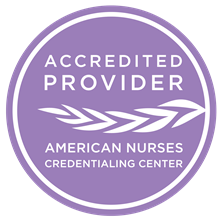With changes in the Five-Star Quality Rating System affecting the nursing home industry, the Certified Legal Nurse Consultant must understand how Centers for Medicare & Medicaid Services (CMS) collects and relies on data from various data sources.
Quality Ratings for Nursing Homes Are Public
Since 1998, CMS publishes information about nursing homes on a federal website, Nursing Home Compare. In December 2008, CMS enhanced its Nursing Home Compare public reporting site to allow the public to view quality ratings for each nursing home that participates in Medicare or Medicaid. The primary goal of this “star” rating system for each nursing home is to provide residents and their families with an easy way to understand assessment of nursing home quality through meaningful distinctions between high and low performing nursing homes.
CMS believes, along with many other patient advocacy groups, including the National Consumer Voice for Quality Long-Term Care that the Five-Star Quality Rating System offers valuable and comprehensible information to consumers based on the best data currently available. The rating system features an overall quality rating of one to five stars based on facility performance for three types of measures, each of which has its own five-star rating. The CMS formula and scoring system is complex and what follows is a general overview of the three measures:
Health Inspections – Measures based on outcomes from state health inspections. Points are assigned to the individual deficiencies based upon the scope and severity. The more serious or widespread the deficiency, the more points are assigned. If the inspection yields a finding of substandard quality of care, additional points are assigned. Repeat visits for noncompliance following the first re-visit are assigned additional points. Complicating this point system, each survey carries a weight factor, the heaviest being the current survey. Lastly, because this data changes, CMS has placed fixed “cut points” or data boundaries between each star category. These cut points are recalibrated each month so that the distribution of star ratings within individual states remains relatively constant over time. Because the health inspection score is weighted, the score may change regardless of the statewide distribution.
Health inspections are based on federal regulations. However, variations between states exist in three ways:
- Survey management. Variation among states in the skill sets of surveyors, supervision of surveyors and the survey processes.
- State licensure. State licensing laws set forth different expectations for nursing homes and affect the interaction between state enforcement and federal enforcement.
- Medicaid policy. Medicaid pays for the largest portion of long term care in nursing homes. State nursing home eligibility rules, payment and other policies in the state-administered Medicaid program create differences in both quality of care and enforcement of that quality.
Because of these variations, the Five-Star Health Inspection quality ratings are based upon performances within a state, rather than on a national level.
Staffing – Measures based on nursing home staffing levels: RN hours, LVN/LPN hours and CNA hours per resident day. Scoring is completed by two case-mix adjusted measures:
- Total nursing hours per resident day.
- RN hours per resident day.
The source of this data is from the CMS form 671 from certification and survey provider enhanced reporting (CASPER). This data is collected from the two-week period prior to the facility’s annual licensing and recertification survey. In addition, data used in the resources utilization group (RUG) calculations from the last electronically submitted minimum data set (MDS). Collectively this information is held constant for one quarter until the next quarterly submission of data is received. Starting April 2012, the percentile cut points for this star rating are fixed. But the last update was completed in December 2011. As of this date, CMS has not determined if annual updates are needed.
QMs (Quality Measures) – There are 32 quality measures based on the MDS. But only 11 of 18 indicators are currently posted on Nursing Home Compare. Long-stay residents have eight indicators with three for short-stay residents. Only three of the QMs are risk adjusted (catheter use, long-stay pain and short-stay pressure ulcers). As of February 2015, the newest QM is antipsychotic medication use in short-stay and long-stay residents. All 11 QMs are given equal weight. The rating is calculated using data from the three most recent quarters. Twenty to 100 points are assigned to each QM according to the CMS scoring rules and formulas. The points are summed and the final star rating is assigned according to the cut-point ranges. The cut points for ADL QMs are computed using state distributions due to the differences in state Medicaid policies governing long term care. The cut points for the non-ADL QMs are computed using national distributions.
The Overall Nursing Home Rating
This rating is a composite measure and is calculated in five steps:
Step 1. Start with the health inspection five-star rating.
Step 2. One star is added if the staffing rating is four or five. One star is subtracted if the staffing rating is one star.
Step 3. One star is added if the QM rating is five star. One star is subtracted if the QM rating is one star.
Step 4. If the health inspection rating is one star, the overall quality rating cannot be upgraded by more than one star based upon the staffing and QM ratings.
Step 5. If the nursing home is a special focus facility (SFF) that has not graduated, the maximum overall quality rating is three stars.
So what does all this mean? Based on an evaluation of the Five-Star Quality Rating System by Abt Associates, between 2009 and 2013 the percentages of facilities receiving a five-star rating more than tripled and the percentage of facilities receiving one star declined. This finding was attributed to the facilities’ “considerable gaming on the rating system.”
CMS addressed this “problem” by resetting the scales. First, the recalibration in the percentile cut points for QMs, and the addition of the short-stay and long-stay antipsychotic drug use that changed the number of measures from 9 to 11. This has had significant impact on facilities’ QM star ratings that in turn changed their overall star rating.
Second, new limits were set for the staffing star rating. Prior to the recalibration, facilities that had three stars in both the RN and overall staffing categories were awarded a four-star rating. As of February 2015, facilities cannot achieve a four-star rating if either category has a three-star rating. Thomas Hamilton, CMS Director of Survey and Certification described this change as, “three plus three does not equal four.”
Soon, CMS will begin conducting specialized onsite surveys to assess the adequacy of resident assessments (aka MDS Accuracy Surveys) and the accuracy of information reported to CMS that is used to calculate the QMs in the star rating system. In 2014, pilot surveys were conducted in five states (Illinois, Maryland, Minnesota, Pennsylvania and Virginia). While the evaluation of the results of these surveys found high levels of compliance related to RN coordination and assessment timing requirements, there were high levels of disagreement between the MDS and medical records in the seven clinical conditions reviewed.
CLNC® Consultants Can Make a Positive Impact on Long Term Care Facilities
How can the Certified Legal Nurse Consultant assist long term care facilities? Whether the CLNC consultant is performing medical record review for attorneys in litigated cases, prelitigation screening or on-site concurrent review, understanding how a MDS 3.0 Assessment is completed, its purpose and the importance of its accuracy is high priority. CLNC consultants can perform a comparative review of the licensing and certification surveys, complaint visits, staffing levels and CASPER reports with the care rendered by the facility and provide this valuable information to the attorney-client. Furthermore, during an on-site concurrent review, conducting quality assurance audits that evaluate resident outcomes, and assisting the facility with initiating performance improvement plans, the well prepared Certified Legal Nurse Consultant can be a constructive asset and assist the long term care facility in understanding their Five-Star Quality Rating.
Because the Five-Star Quality Rating is available and accessible to the public, long term care facilities value their ratings. The number of stars can easily drive bed census up or down which has a direct impact on a facility’s financial stability.
The importance of keeping the Five-Star Quality Rating in perspective cannot be ignored. It represents “snap shots” in time and is not representative of real-time information. The public is not aware of this, and from the long term care community’s viewpoint, this is perhaps the most frustrating aspect of the rating system.
Federal regulations require long term care facilities to provide the highest practicable level of physical, mental and psychosocial well-being, as well as any other required services. The majority of facilities have maintained this requirement; however, it is the few facilities that have not, that drive consumer advocacy groups to lobby government agencies to impose additional mandates and further restrictions. The changes and additions imposed by CMS require more manpower, additional quality assurance and other performance improvement programs. The financial burdens absorbed by the facilities to maintain compliance are not commensurate with state Medicaid, private insurance or Medicare reimbursements. Sadly, this conundrum coexists with the continued government changes.
On your next nursing home case, your star will shine when you enlighten your attorney-client about the changes to the nursing home Five-Star Quality Rating System.
Suzanne Arragg, founder and president of SEA & Associates Medical Legal Consulting in California, provides legal nurse consulting services to prestigious law firms nationwide. Suzanne’s success in consulting with attorneys as an integral member of the litigation team has resulted in a million-dollar CLNC business. Collectively representing more than 60 years of clinical nursing experience, for 17 years her company has specialized in long term care malpractice and dependent adult and elder abuse litigation. Suzanne is a CLNC Mentor for LegalNurse.com.
P.S. Comment and share your experience with the nursing home Five-Star Quality Rating System.










My name is Michelle Duke. I just attended the CLNC® Certification Seminar in Orlando, FL. I’m sending this on as my current job is working as an MDS Coordinator, so I’m getting familiar with the QM’s talked about here. Also, the facility I work for has been a 5-Star rated facility for the past 3 years in a row.